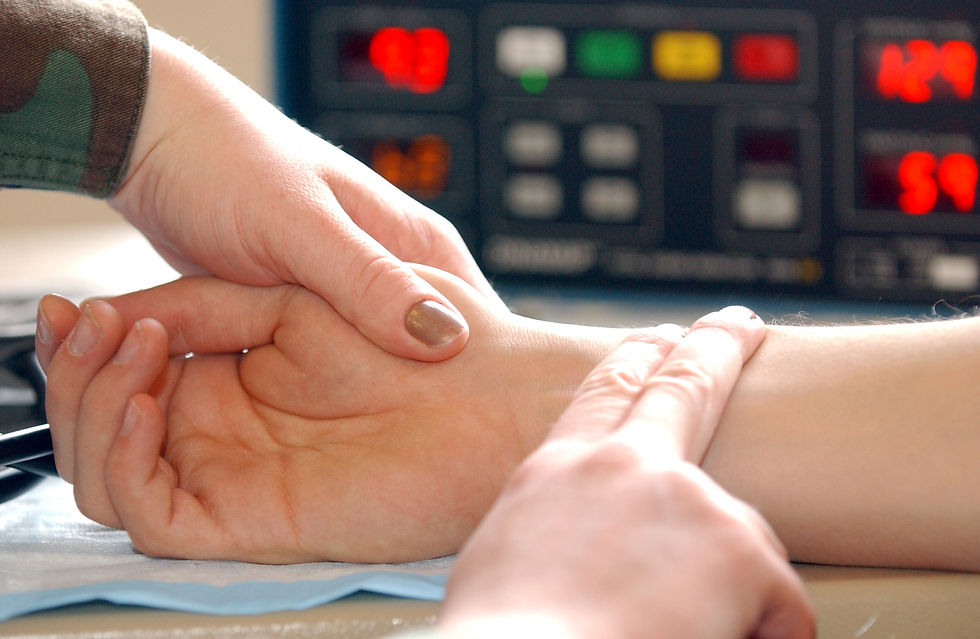Checking Your Heart Rate. It's Important!
- Amber Hayes, DPT
- Dec 31, 2017
- 2 min read
New year, new resolutions, new you! As 2018 commences a goal of yours may be to hit the gym, or just be more active. With that is mind, it is important to monitor your body as you begin or continue your fitness journey.
You can find recommendations for physical activity according to the Center for Disease Control and Prevention here
A key to monitoring your response to exercise is to check your heart rate.
Here is how to properly check your heart rate
First, you will need to temporarily stop exercising. Next, find your pulse. This can be done by pressing lightly along your wrist, on the side which your thumb is located. You need to utilize your pointer and middle finger, not your thumb. Once found, you should feel a pulse, or a beating sensation beneath your fingers. You will then time yourself for a full 60 seconds, counting the beats. This will then be considered your heart rate in beats per minute.

Should you have difficulty with assessing your heart rate at your wrist, you may also check it at your neck by placing the same fingers on either side of your wind pipe until that beating is felt.
Your maximum heart rate can be determined with the following equation:
220 - your age
So, for example, if you are 55 years old, your maximum heart rate would be 165 beats/minute (220-55=165).
Now with this being said there are target ranges for your heart rate during exercise.
For moderate-intensity exercise it is recommended your heart rate be between 50-70% of the maximum heart rate.
For vigorous-intensity exercise it is recommended your heart rate be between 70-85% of the maximum heart rate for your given age.
So, let's go back to our age example for a 55 year old person. We have already determined the maximum heart rate is 165 beats/minute. For moderate-intensity exercise a target heart rate range would be between 82 beats/minute (165x.5) and 115 beats/minute (165x.7).
For vigorous-intensity exercise the heart rate for a 55 year old person should range from 70-85% of the maximum heart rate. Therefore that is between 115 beats/minute (165x.7) and 140 beats/minute (140x .85).
It is important to monitor this vital sign to make sure you are experiencing an appropriate response to exercise. Typically if you can talk while exercising it is likely moderate activity and if you are only able to say a few words before requiring a breath, it is considered vigorous.
Exercise should be stopped if you feel faint, light-headed, dizzy, or experience chest pain.
For further questions regarding exercise, you can refer to your PCP or ask your physical therapist!
Here's to meeting your goals in 2018!






















